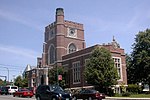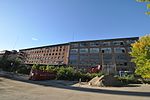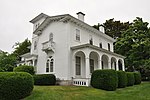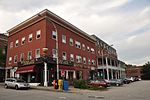Hillsborough County Registry of Deeds
Buildings and structures completed in 1901Buildings and structures in Nashua, New HampshireCourthouses in New HampshireGovernment buildings on the National Register of Historic Places in New HampshireNational Register of Historic Places in Hillsborough County, New Hampshire
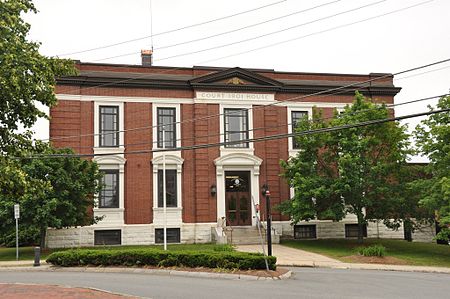
The Hillsborough County Registry of Deeds is located at 19 Temple Street in Nashua, one of the county seats of Hillsborough County, New Hampshire. The two-story brick building was built in 1901 as a courthouse and county office building to a design by Boston architect Daniel H. Woodbury, and is a good example of Classical Revival architecture. The building was listed on the National Register of Historic Places in 1985. The current courthouse is a modern building at 30 Spring Street.
Excerpt from the Wikipedia article Hillsborough County Registry of Deeds (License: CC BY-SA 3.0, Authors, Images).Hillsborough County Registry of Deeds
Main Street, Nashua
Geographical coordinates (GPS) Address Website Nearby Places Show on map
Geographical coordinates (GPS)
| Latitude | Longitude |
|---|---|
| N 42.761388888889 ° | E -71.465 ° |
Address
Hamblett & Kerrigan
Main Street 146
03060 Nashua (Ward 4)
New Hampshire, United States
Open on Google Maps


